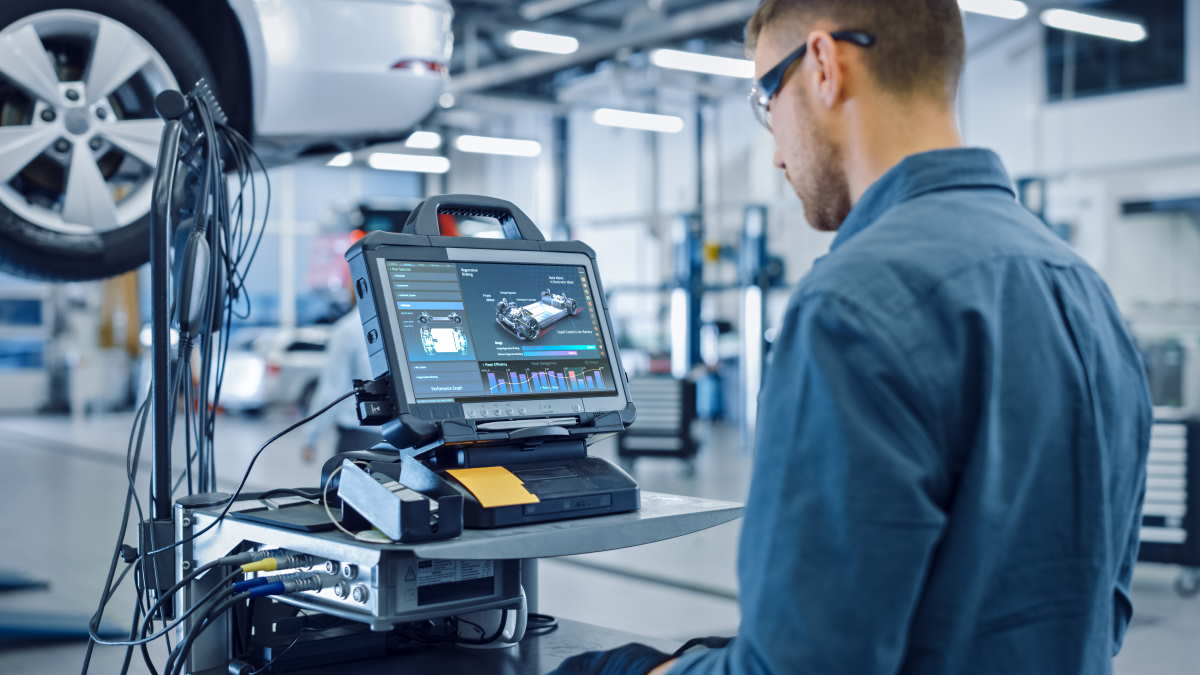Trucks are a significant asset for transport and logistics firms. When you count all the trucks, the combined value can make the entire fleet the most valuable asset your business has.

Beyond being valuable, your trucks are vital for the operation of the business. When they go down, it can result in a significant disruption to operations.
That is why proper maintenance is such an important part of fleet management. With the right maintenance practices, you can prevent unexpected breakdowns and reduce costs. This post will explore maintenance tips to keep your fleet running.
Pre-Trip Inspections
Your drivers can be the first line of defense against breakdowns and unexpected maintenance issues. That’s why you should have them perform pre-trip inspections before they take the trucks out for the day. You should have them inspect the lights, tires, fluid levels, windshield, mirrors, and more. If you want to make it easy, you should create a checklist for them to follow every day. That ensures that they don’t miss anything during their pre-trip inspections. Along with being good for maintenance, a daily inspection is also a smart safety measure.
Driver Training
Driver training is another important measure for fleet maintenance. To start, proper training ensures drivers know how to operate the truck. Beyond operation, training can also ensure knowledge of common maintenance issues.
You can teach them about the signs that indicate various maintenance problems. Training can also include the pre-trip inspection to ensure drivers do it the right way. It may also include repair and maintenance techniques they might need on the road.
Preventative Maintenance
Adhering to manufacturer-recommended preventative maintenance is a critical part of fleet management. Follow the manufacturer’s recommendations for tire changes, oil changes, replacing filters, etc. Beyond that, you should plan regular inspections with your maintenance team. These inspections should be performed based on intervals of time or mileage. It should also be a deep dive that goes much further than the daily inspections your drivers perform.
Additionally, you should ensure detailed record-keeping of all maintenance activities. That way, the maintenance team can keep track of what they have done. The records should also include the maintenance schedule for the vehicle. These records and the schedule can ensure your team is always on track with preventative maintenance.
Predictive Maintenance
While preventative maintenance is important, predictive maintenance can take vehicle protection to the next level. Predictive maintenance uses sensors to monitor vehicle components in real time. Maintenance teams can then use software to analyze the data from these sensors to detect maintenance issues early.
According to an expert from IDS, “Predictive maintenance can benefit a fleet in many ways. With intelligent systems monitoring the truck, it can catch maintenance issues early and prevent problems. It can reduce the chance of larger failures and prevent expensive repairs. Staying ahead of these issues can also help you avoid issues associated with unexpected downtime.”
Always Use the Right Parts
Fleet managers might find cheaper substitute parts available for their vehicles. While these parts might save money at the purchase point, they might not be the best option. Opting for genuine or recommended parts ensures compatibility, reliability, and longevity. These parts meet the exact specifications of the vehicle, reducing the risk of malfunctions or breakdowns. Improper parts might also have negative effects on other parts and systems in the truck. Additionally, the proper parts might also come with better warranties and assurances.
Automate Maintenance Schedules
Are you still using paper records to keep track of maintenance tasks and schedules? While this older system may be what you are used to, it can leave more room for human error. Automating maintenance schedules streamlines fleet management processes, ensuring timely upkeep and reducing the risk of oversights.
These systems use software to track all maintenance activity. They can also maintain a schedule for maintenance tasks and send alerts to maintenance personnel. Automated maintenance tracking ensures that routine maintenance tasks are never missed. It also makes it easier for fleet managers to monitor the maintenance histories of vehicles.

Install Tracking Systems
One of the issues with fleet maintenance is that you can’t always know what drivers are doing once they leave for the day. While you might be able to rely on most of them most of the time, there could be occasions when some drivers might not handle or treat the truck properly. That is where various types of tracking systems can come in handy.
Depending on the system, they can provide real-time information about the vehicle’s location and usage. It can tell you if drivers are speeding or driving aggressively. Cameras can provide visual data about driver behavior. Just having the tracking systems can be beneficial because drivers will be more likely to follow the rules when they know the monitoring and tracking system is active.
Fleet maintenance can be a lot of work, but it is worth it. With the right practices, you can extend the life of vehicles and reduce repair costs. It can also ensure your trucks remain functional to prevent disruptions.